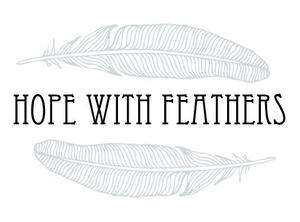"Once you learn to read, you will be forever free."
- Fredrick Douglass
No matter where we find ourselves, when homeschooling moms gather in one place, you can count on a couple of things. First, we can not stop talking about curriculum and sharing ideas, curriculum catalogs and the talking about all we are learning! And second, it becomes obvious rather quickly that we each have something knawing at us that we long to have relieved by conversation with our "colleagues."
Homeschooling can truly be isolating.
The farther I walk down this path, the more I see that this choice requires a certain courage to keep going. We will all inevitably question whether we are doing enough, whether we are doing it right (coincidentally, there isn't just one right way, but that's a story for another blog post!) We question whether the work we put our hands to each day is producing good fruit, if our children will learn what they need to and cultivate a strong character; if the daily distractions and diversions that are inevitable will overtake us, or if the beautiful mess of learning and home all mingled together will become the sweetest of memories. This journey is so full of wonderful, but those fears seem to lurk.
We are each so hungry for tips and tricks and wisdom- we drink up how life is going in the homes of others, we entrust our own stories to one another and we embrace bonds where others can see those fears in us and combat them with truth. Those big hugs from others in the trenches and words from moms who have gone before us? Priceless. I hope that wherever you are in teaching your children to read, and whether you homeschool or not, that this can be an encouragement to you! Its my big hug to you as I share a little of what we've learned along the way.
So onto what I'm learning about reading levels.....
When our children are reading fluently and independently, everything else about homeschooling changes because we can set them on the path to educational freedom.
Charlotte Mason said, "there is no education, but self- education," and when a beautiful relationship with books is forged, the real learning has only just begun!
I think teaching our children to read is equally the most delightful and one of the most stressful aspects of homeschooling. The pressure's on because it is so foundational. There are, of course, a million ideas about how this is done best and we've tried at least 9,999,999 of them over here.
Under my own roof, I have had an early reader who was enjoying Charlotte's Web by the end of Kindergarten, a severely dyslexic child who would run to the bathroom and throw up after reading one paragraph of Dick and Jane because it was so disorienting, a wily and quite typical boy who struggled to sit still for any formal instruction for a while longer than I was comfortable with, and the baby of the bunch who was taught to read mostly by older siblings while I was freaking out about whether they were doing all right (update: they were!)
In my moments of worry, I talked to other wiser women. One of my friends had a son who didn't want to read independently until he was nearly 12 and at then at age 14 was a national merit scholar. Another encouraged me to remember to keep the love of learning and reading paramount and for goodness sakes, just relax. And yet another reminded me that in some educational philosophies (Waldorf, most notably) formal reading instruction didn't begin until age 8. Do you see the trend here? Everyone who had gone before me kept saying, "its going to be all right." And now I'm telling you : It is. Its going to be all right.
Ultimately, what I see in my own home is that no two children are the same, and that my approach needed to change to suit the beautiful design and personality held by each of them.
I'm going to share all week long about what tools and ideas we have implemented for different learning styles, my favorite picks for programs we have used and how I kept myself from having a heart attack in the process, but today- I want to share one of my favorite tools with you!
Ever wonder what grade level the book your child is reading actually falls into? There's a chart for that!
There is such a wide range of development and reading levels in each grade, but it has really helped me to take a deep breath and keep moving forward to be able to plot how my children are doing for their assigned grade levels. Its simply another tool we can use to be excellent in this role and equip ourselves as our children's teacher.
When you determine the level of any book, the key component you are looking for is the Lexile Score. That score corresponds to a particular grade level nationally, regardless of what system of letters or colors your own region or school district may implement. Its a handy device because not only can it help you assess what level your kiddos are reading at, it can help you pick books that will fit their level or just above to challenge them.
To determine the Lexile Score, google is your friend! For Charlotte's Web for instance, simply enter this into your search bar: Charlotte's Web lexile score
The score? 680L
For The Cat In The Hat? 150L
The Lexile Score is not only available online, but also in your local bookstores and libraries. I've actually found Barnes and Noble's website to be so helpful! Ask those sweet ladies behind the counter to help you find the Lexile Score on the covers or copyright pages of the books you check out as well, then compare it with this grid to correspond to grade level.

